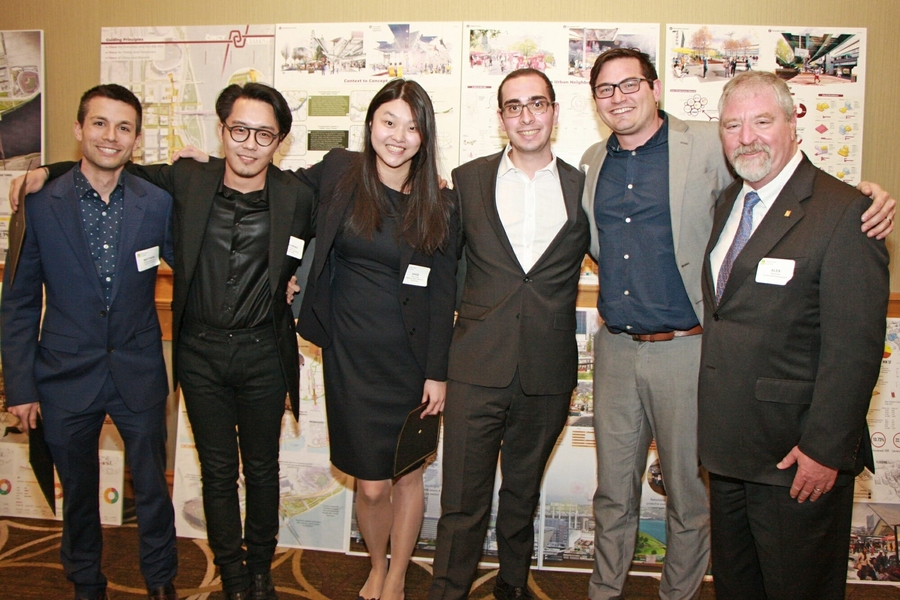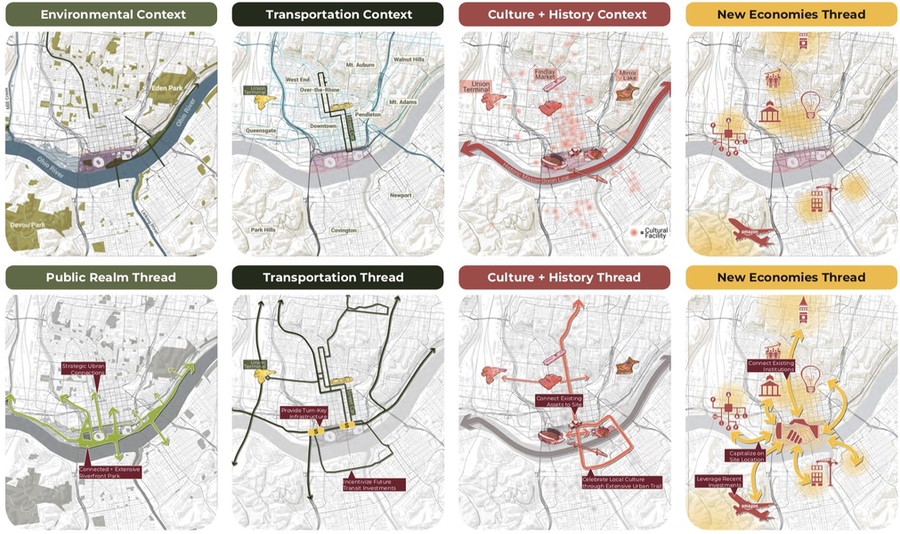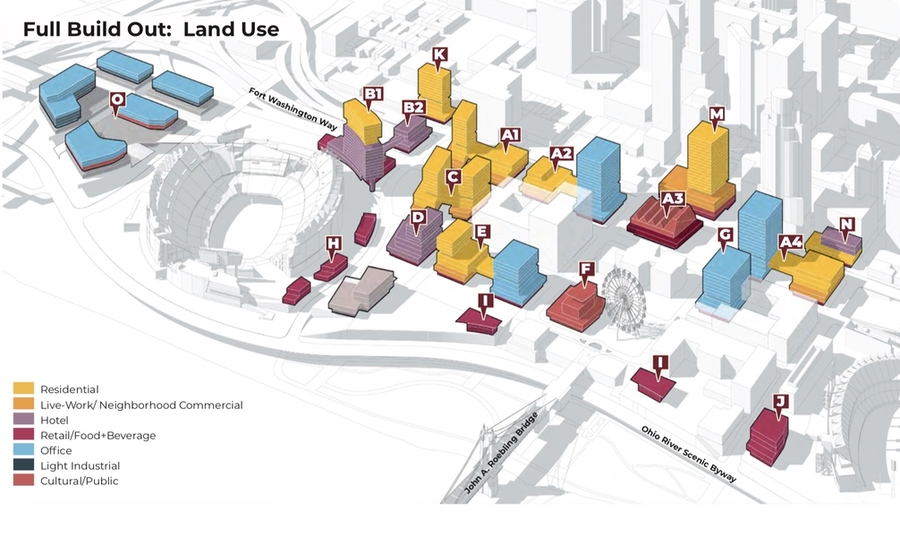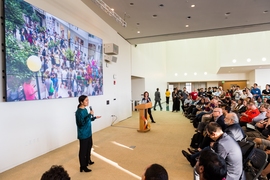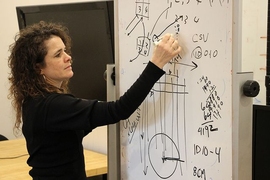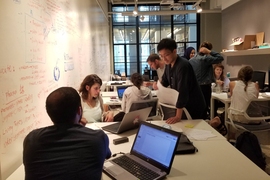A redevelopment plan for a Cincinnati site presented by a team from MIT and Harvard University has won the 2019 Urban Land Institute (ULI) Hines Student Competition. The annual ideas competition invites graduate students to devise a comprehensive design and development scheme for a large-scale urban site.
The 2019 competition tasked teams with creating designs, plans, and a development scenario for an actual site in Cincinnati. The site includes a central business district and the downtown riverfront bisected by a highway. Given this urban fabric, teams were challenged with integrating all of the spaces to create a vibrant, pedestrian-oriented, sustainable, mixed-use neighborhood.
The winning MIT-Harvard proposal, The CincyStitch, reimagines the riverfront not as the physical edge of the city but as the organizing center of a better-connected region. The CincyStitch uses four narratives themes — culture and history, public realm, transportation, and new economies — to craft its vision for strategically expanding the site and creating connections despite physical and historical barriers. Within the proposal, these themes describe an urban space that can be future oriented while maintaining deep connections to its history.
“We are very proud of the CincyStitch team,” says Hashim Sarkis, dean of the School of Architecture and Planning (SA+P). “The team is the embodiment of a defining characteristic of SA+P and MIT: the ability to gather talented individuals from diverse backgrounds to solve difficult problems.”
Since 2003, the ULI Hines Student Competition has challenged students to collaborate across disciplines and imagine a better built environment. Groups of five students form teams to devise a development proposal for a real site in a North American city by providing designs, market-based financial data, and related narratives.
Team proposals were required to illustrate innovative approaches to five general elements: planning context and analysis; a master land use plan; urban design; site-specific illustrations of new development; and development schedule and finances. This year’s competition involved 90 teams representing more than 40 universities in the United States and Canada. Four teams advanced to the final round of the competition that concluded on April 4.
“The jury was impressed with all of the teams in terms of the completeness of their presentations, the creativity, and all of the thought that went into their proposals,” says ULI Hines Student Competition jury chairman Alex J. Rose.
“The MIT-Harvard team stood out because it demonstrated the greatest cohesiveness by an interdisciplinary team to solve an urban challenge requiring multiple disciplines,” says Rose, senior vice president of Continental Development Corporation in El Segundo, California. “The team had a very clear strategy, an achievable plan, a clear and creative financial model, and a presentation that strongly supported and illustrated their plan.”
The CincyStitch was led by city planning graduate student Joshua Brooks and included another team member from the Department of Urban Studies and Planning (DUSP), Alan Sage. Other team members included Department of Architecture student Zhicheng Xu, MIT Sloan School of Management student Shiqi Peng, and Matthew Macchietto of Harvard’s Graduate School of Design (GSD).
Eran Ben-Joseph, professor and department head of DUSP, and Dennis Pieprz, a faculty member at the GSD and principal at Sasaki, were the team’s academic advisors.
“All of us, in our approach to urban design, planning, finance, architecture and landscape architecture, really think of cities as human habitat,” Brooks says. “City building is something we consider as a calling, not just a profession. As we embarked on this assignment, we wanted to take a position on what we think cities should be, and our proposal does that.”
